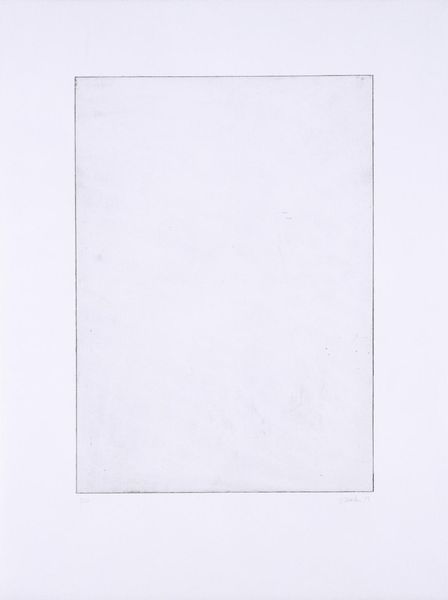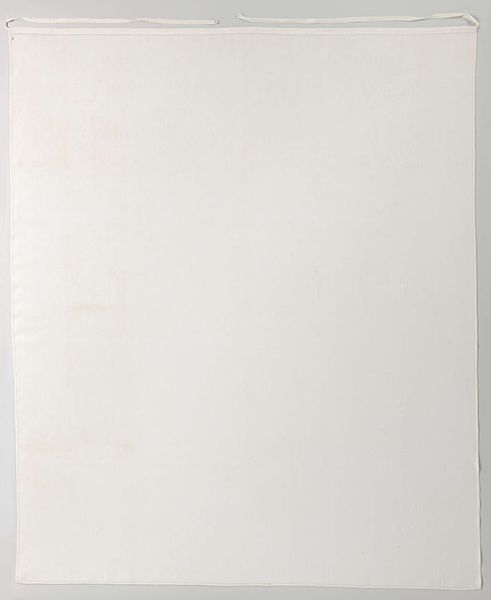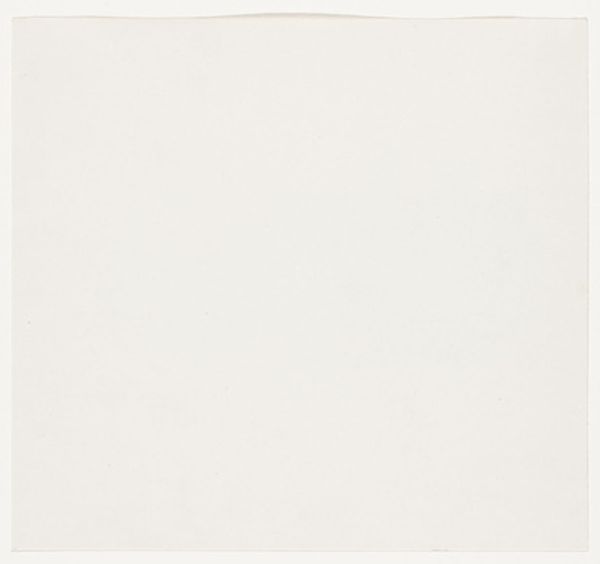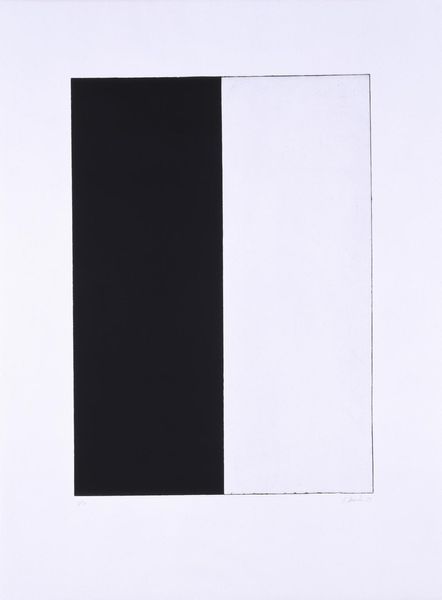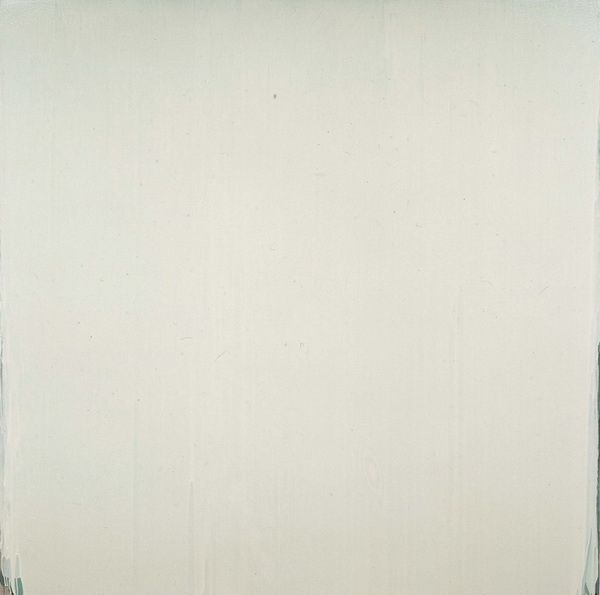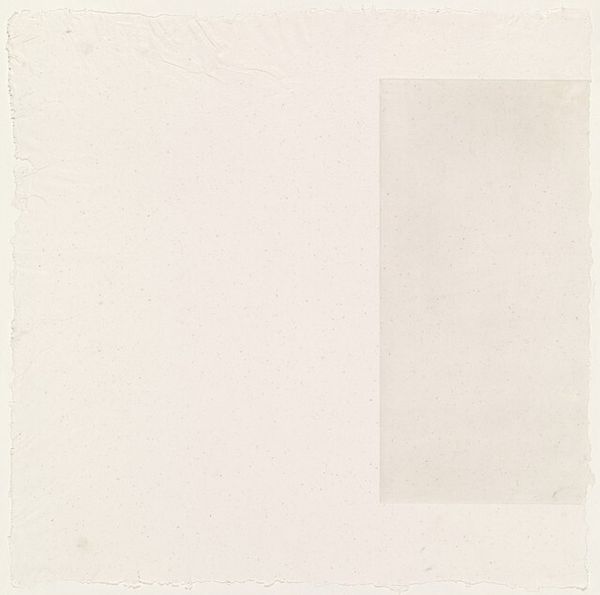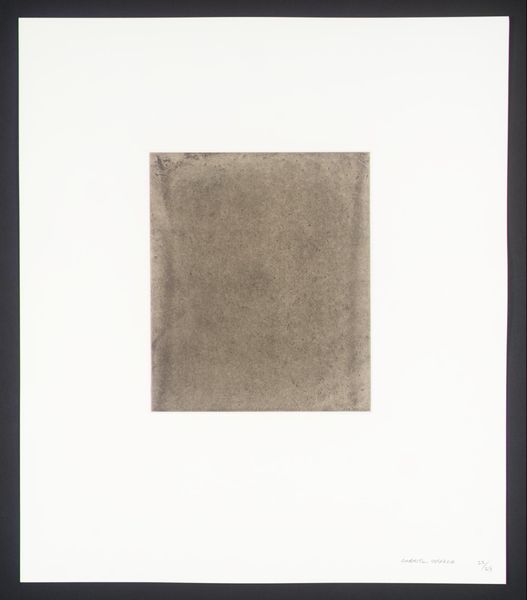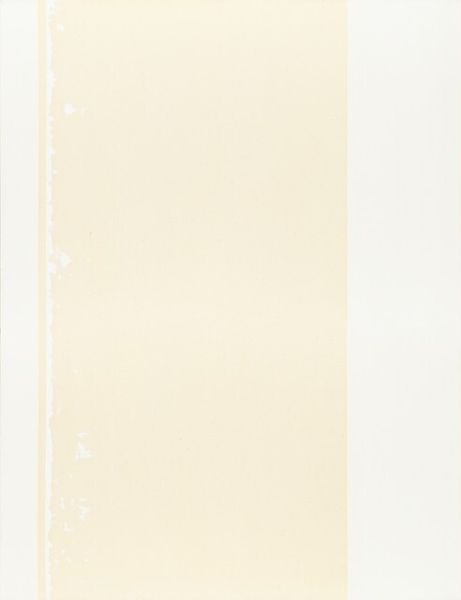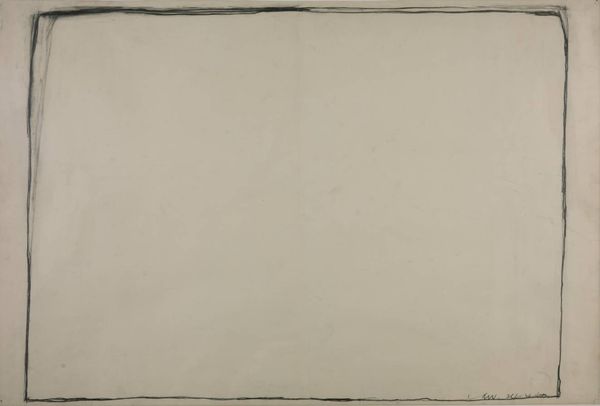
print, graphite
#
conceptual-art
#
minimalism
# print
#
monochrome colours
#
geometric
#
line
#
graphite
#
poster
#
monochrome
Copyright: Brice Marden,Fair Use
Editor: Okay, next up we have Brice Marden’s "Untitled (e) From Five Plates," a graphite print created in 1973. It's basically a rectangle, and it feels incredibly simple, almost empty. How do you interpret this work? Curator: Empty, perhaps, but it holds a potent stillness. Think about the rectangle itself. In various cultures and historical periods, the rectangle signifies order, structure, the very frame of our constructed realities. But here, Marden empties it of explicit content. Editor: So, what’s left? Curator: The essential form. Marden, deeply invested in process, offers us an invitation to meditate on the most basic elements of art – line, form, surface. Consider the subtle variations in the graphite; a whispering texture emerges. Can you sense any implied emotional weight in this simple act of reduction? Editor: I see the texture now, but it still feels… cold. Emotionally detached. Curator: Detachment can be a powerful emotion, no? Think about the deliberate erasure in Zen Buddhism, or the Shinto emphasis on purifying emptiness. Minimalism isn't about nothingness; it’s about what resonates *within* that perceived void. What unspoken stories, perhaps cultural or personal, might this "emptiness" hold for each viewer? Editor: So, it's a prompt to bring our own meanings? It’s interesting how the seemingly absent presence becomes a strong message. Curator: Exactly. The ghost in the machine. Through austerity, Marden unveils the power of symbolic form and individual perception. Editor: I see it now. Thanks! It definitely changed how I see minimalism.
Comments
No comments
Be the first to comment and join the conversation on the ultimate creative platform.
